19日(木)2限に1年1組の「英語コミュニケーションⅠ」の授業を見学しました。担当は島田先生です。
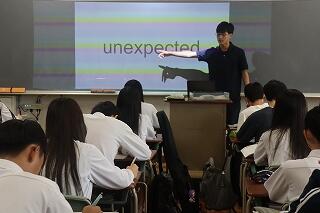
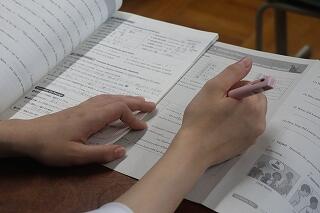
今日は、教科書 Lesson5 A Journey to Peace の Part3 の本文の精読をしました。テーマは、What item enabled Louise to save many refugees? ――内容を理解し、この問いに答えることが、この時間の目標です。
初めに Words & Phrases の音読を皆でしました。今高生はどのクラスもしっかりと声を出して発語するのでいい感じです。
How do you say *** in English? What is the meaning of *** ?
きちんと予習できているか、これらの語彙を覚えているか、ペアワークで確認しました。皆よくできています。続いて、生徒たちはプリントの Logic Flow ⇒ TASK1 とテンポよく取り組んでいました。
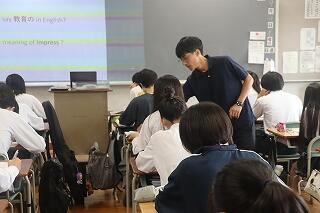
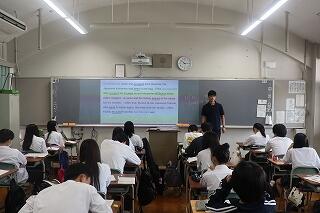
次に、本文のリスニングです。先生が「ただ聴くのではなく、目的を持って聴くことが大切。今回のテーマ、 What item enabled Louise to save many refugees? に注目して聴いてください。」と話されました。
At last, Louise and her family arrived at one of the refugee camps in the Congo. However, the camp was like hell. People could not find enough food, so they had to eat grass to stay alive. A large number of people died every day. One day, when Louise was standing in line to send a fax to Japan, a Japanese volunteer doctor spoke to her. He realized that Louise knew some Japanese because he noticed hiragana on her paper. He asked her if she could work as an interpreter in the camp. Unbelievably, when she escaped from Rwanda, her Japanese dictionery had been in her bag. This unexpected item enabled her to work as an interpreter and save many other refugees.
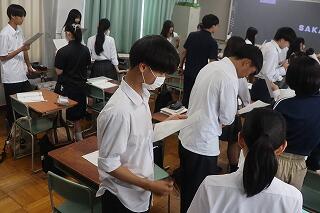
「if は【もし~】ではなく、【~かどうか】と訳し、名詞節をつくる。」といった文法事項をきちんと確認しながら、正確に読んでいきました。どんなアイテムが多くの難民(のいのち)を救ったのか書いてありますね。
日本の高校1年生が学ぶ英語の教科書にさらりと書いてあるこの英文が言い表している事実を、英語を学びながら、生徒一人ひとりが、どのように受け止めるのでしょう。ここで出てくる日本のドクターも、高校生の時にこのような文章と出会ったのかもしれません。
生徒たちは問えも熱心に学んでいました。私も勉強になりました。有難うございました。